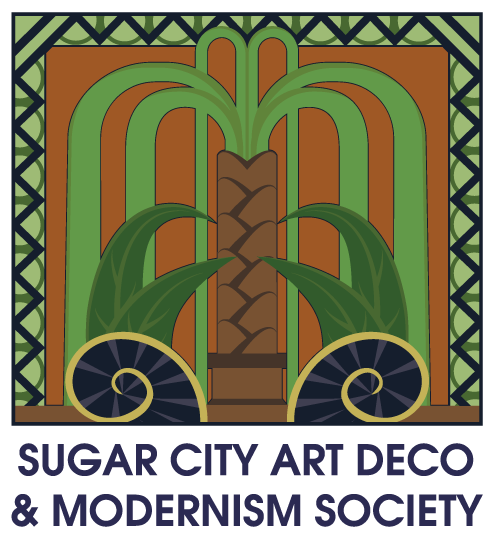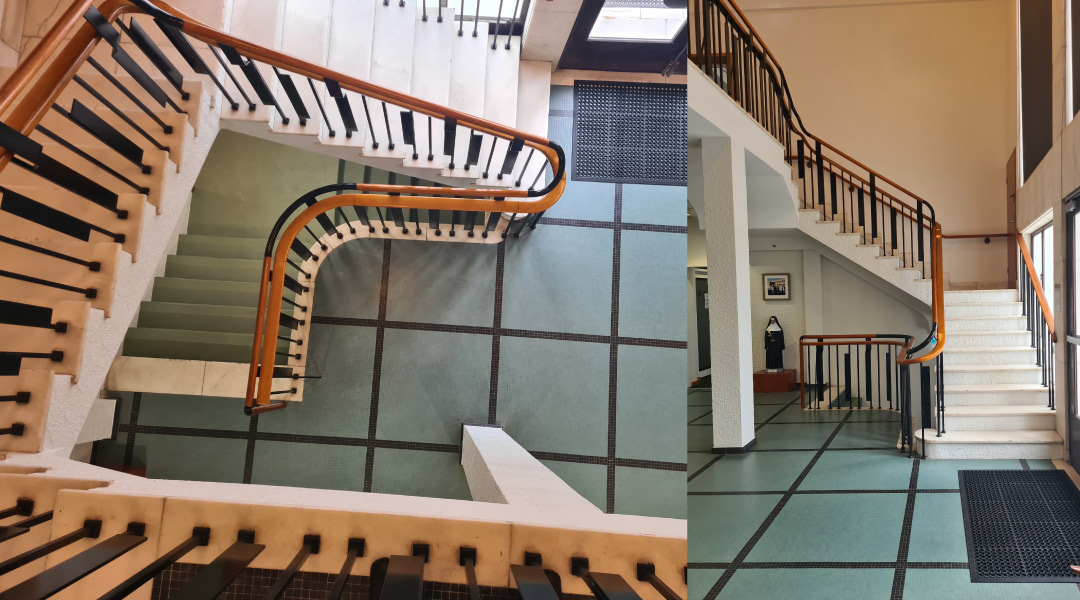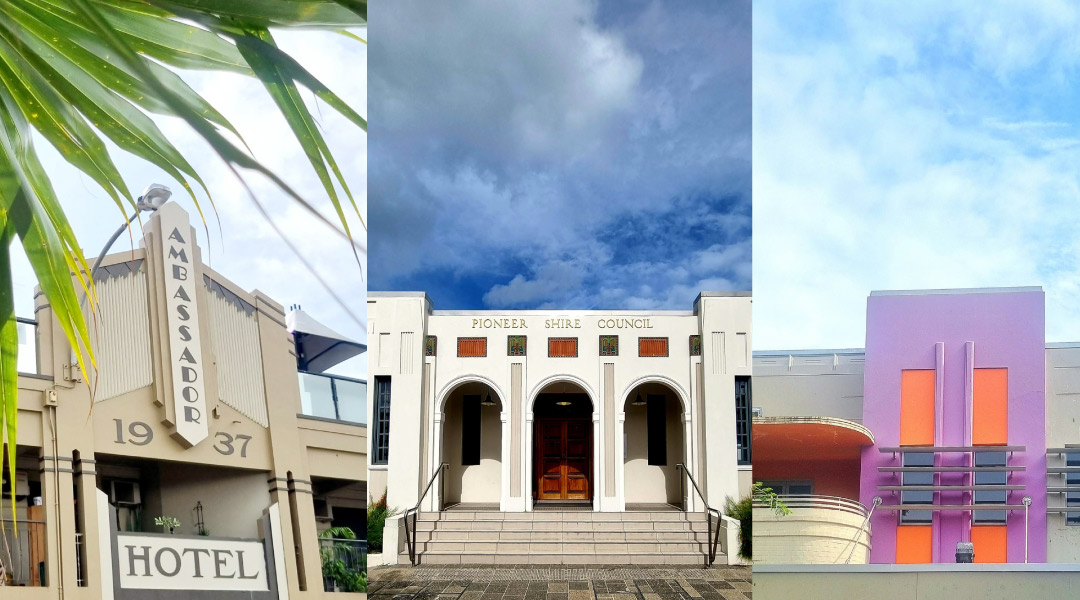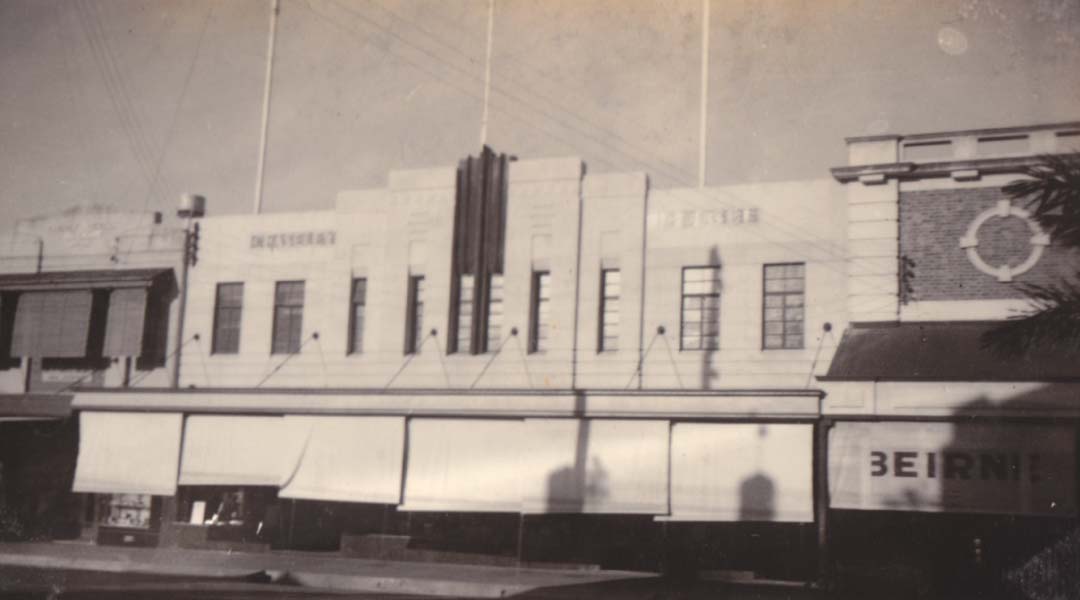Written by Vicky Bowden of the Sugar City Art Deco and Modernism Society | Published April 2022
Whilst the Guthrie brothers were responsible for the erection of many of Mackay’s well-loved Art Deco landmarks, another family – the McDonalds – built many other structures that shaped our town during their 80-year plus tenure.
Donald McDonald arrived in Mackay in the 1870s with his young family. Donald was born on the Isle of Mull in Scotland in 1825. As an adult he travelled to Trinidad in the Caribbean, where he met and married his wife, Caroline Augusta Stanthorpe Chubb, in 1853. Sometime after that, they made their way to Queensland Australia.
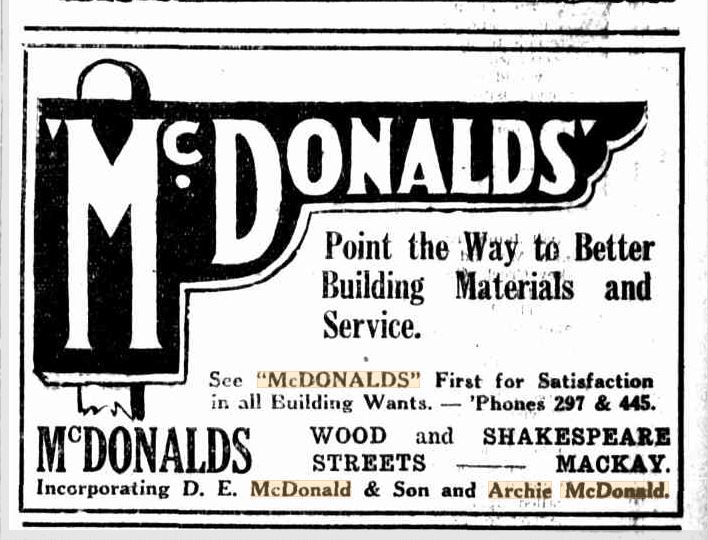
The couple had 3 children – Donald, Susan and Charles. It was Donald Edward Neil McDonald that went on to form and manage the building and hardware company that was active in Mackay until at least the early 1950s.
In earlier years Donald Junior had been involved with sugar farming at Habana. Quite how he became involved in the building trade is less clear, but the company he built was to become one of the biggest of its kind locally – thanks to the efforts of his son Donald Archie. Archie came up through the ranks first as apprentice, and then later employer. He bought out his father in 1929, when the company employed just a handful of men. He grew the business to employ 100 men in the pre-war years. Many Mackay tradesmen were trained by the McDonald firm.
In April 1926 Archie married into another well-known Mackay family, the Christies. Settling into their home on Wood Street, Archie and his wife Ivy Ruth went on to have two children of their own.
The McDonald footprint in Mackay is extensive, with many of their notable buildings still in existence. Examples include Chaseley House, completed in 1937, designed by HVM Brown in a functionalist style with Art Deco detailing. McGuires Hotel was completed in 1938, another Brown design, this time in a Spanish Mission style – described as the “Ritz of the North” when it was built. McDonalds also built the Palace Hotel, in 1939, another interwar structure in the functionalist Art Deco style. This one was designed by architects Hall and Philips using bricks from the Pindi Pindi brickworks, another arm of the McDonald empire. The Empire Café on Sydney Street was built by McDonalds in 1940 to another HVM Brown design with Art Deco detailing on the façade, featuring two-tone tiles and chromium stripes. Inside a green, cream and buff colour scheme, Wunderlich ceiling, feature mirrors and four electric chandeliers put the finishing touches to this “thoroughly modern” milk bar. This establishment was run by Ms Warhurst and Ms Gould for many decades.
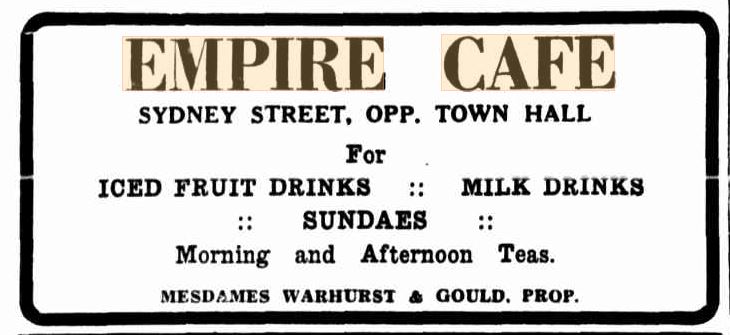
At Pindi Pindi Archie had established the brickworks business in 1933 in partnership with Edmund Evans, a bricklayer by trade, to produce firebricks for the local sugar mills. The works also supplied building bricks, with numerous Mackay structures built using Pindi Pindi bricks – including the Central School on Alfred Street, the T & G buildings on Wood/Victoria Streets, the Day and Night Pharmacy on Sydney Street and the Court House on Brisbane/Victoria Streets. They were also used to build the spectacular Villa Faedis, part of the brickworks complex in Pindi Pindi, in 1939. The house was built for the Giaiotti family. Pindi Pindi bricks were used as far north as Cairns, inland to Mount Isa and south to Ipswich. The old brickworks site still remains in part.
Many other local businesses and shop fronts were constructed by the McDonalds firm, or their renovations carried out using materials sold by McDonalds’ retail hardware division.
The McDonalds touch did not stop in Mackay either, with buildings constructed from Bowen to St Lawrence, and inland to Nebo. During the war years McDonalds took on government contracts which saw their ranks swell to as many as 500 tradesmen. One such contract was the building of the Gunyarra Gas Warfare Experiment Station in the swamps near Proserpine. This was a significant undertaking, with the build including storage huts, accommodation for 300 staff, workshops, laboratory and testing facilities, and an airstrip. The construction was completed in 1943 and the facility used until the conclusion of war in 1945. The firm also built US naval base installations at Mackay Harbour, and air raid shelters at Mackay Airport.
McDonalds were also involved in the building of the Eungella Chalet, a convalescent retreat for wealthy locals, completed in August 1933. This was the brainchild of the syndicate headed by local doctor Ernest Chenoweth. In the Daily Mercury report of the official opening, Dr Chenoweth pays tribute to Archie’s business and staff, who had worked tirelessly to get the building finished, despite a widespread outbreak of influenza which had affected Archie, his workforce and many others involved in the project.
In 1938 Dave Pratt bought into the McDonald firm, at which point it became a registered company trading as McDonalds Pty Ltd, with Archie as managing director. After the war Mr Pratt took over the contracting side of the business whilst Archie retained his interest in the retail hardware part of McDonalds, only selling out in 1953 due to ill-health.
When Archie and his wife Ivy left Mackay in 1954 to move to Brisbane, he was farewelled by many of his friends and colleagues at a special function at the Ambassador Hotel. One speaker said “his name will be associated with Mackay as long as it stands. I feel we owe him a great debt of gratitude.” In response Archie said he would have been ashamed to have done less.
Ivy died in 1965 in Brisbane. Following her death Archie returned to his hometown of Mackay, where he died in 1989 and was buried in the Mackay cemetery.
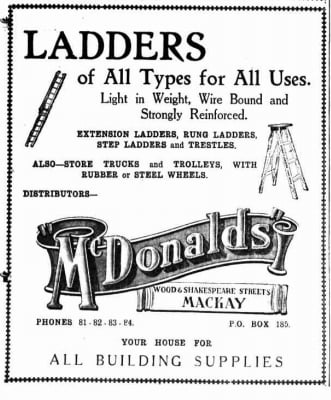
More about the Society:
The Sugar City Art Deco Society is dedicated to promoting and preserving the Art Deco architectural heritage of Mackay. Our award-winning city night tours will restart on a regular basis in June, see our Facebook page for details
